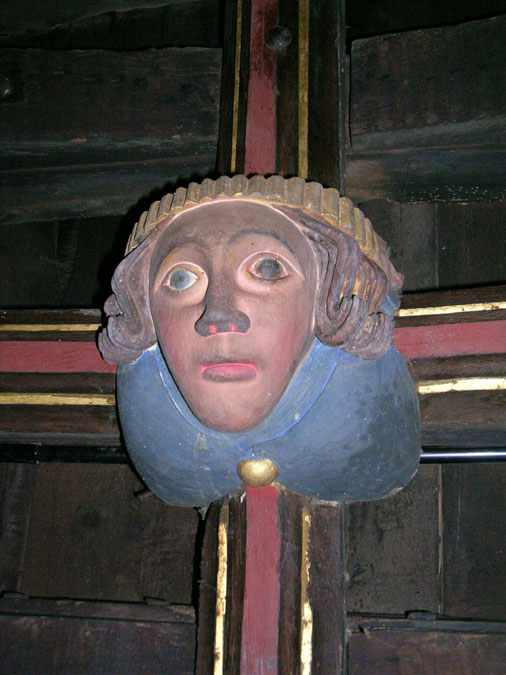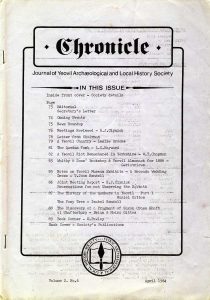This article came from the Chronicle published April 1984. Page 88
THE DISCOVERY OF A FRAGMENT OF SAXON CROSS SHAFT AT SHAFTESBURY.
Authors: Brian and Moira Gittos
On 31st October 1983 a tour of Wiltshire churches was followed by a visit to Shaftesbury. The redundant church of Holy Trinity Shaftesbury is currently occupied by a community centre and a variety of commercial enterprises. We arrived at the church, intending to monitor the condition of the 13th c. purbeck marble effigy of a priest which was transported from the porch to the tower in November 1980 (see Chronicle Vol.I No.6 p.8). However having failed to gain access to the ringing chamber – where we last saw the figure – we made a cursory examination of the churchyard. Adjacent to the south wall of the tower, was a large heap of rubble chiefly composed of building material, presumably removed from the church during the alterations.
A single stone block near the top of the pile attracted attention. It was a roughly shaped piece of limestone. Through the weathering and residual mortar an interesting pattern could just be distinguished. Closer examination confirmed the hasty first impression that this stone had been carved with an elaborate pattern of Saxon interlace.
The block is roughly triangular in shape with the overall dimensions being approximately 9” by 10” by 8” thick. One triangular face has carved detail and an adjoining rectangular face is smoothly dressed, which probably represents its original surface. There is slight evidence of carving on a third side, which adjoins both the carved and dressed faces. All the other sides are roughly broken to make the block usable as building material at a later date. The carved panel had a plain border about 1½ wide.
The interlace pattern sculptured on the stone is of a distinctive type termed “double strand” interlace by the Royal Commission. That is to say, the usually continuous ribbon which makes up the pattern is sub-divided into two strands by a central line. The use of a “double strand” interlace is paralleled on other stones in the area such as at Gillingham and East Stour (now in the British Museum). Nearer to Yeovil, there is a fine example at West Camel where a shaft section was discovered reused as an impost of a 13th c. arch.
The second small area of carving on the Shaftesbury stone also appears to bear an interlace design but so little remains that is is difficult to be certain. The details of the carving of the main panel are unclear because there is much residual mortar overlaying the carving. This mortar is of two colours, suggesting that the piece has been reused more than once. Attempts are being made by a conservator to remove this mortar and reveal more of the carving.
The site of the Saxon Abbey of Shaftesbury lies immediately to the south of Holy Trinity Church, beneath the foundations of the Medieval Abbey. The RCHM (Dorset Vol.IV p.61) records that only two pieces of stone with interlace carving survive. These are lodged in the small museum on the site. There can be little doubt that the newly discovered fragment., which is larger than either of the other two, derives from the precincts of the Abbey and probably formed part of the shaft of a standing cross. The Royal Commission dates the Gillingham and East Stour examples as 9th or 10th c. and it is reasonable to estimate a similar date for the new addition to the scanty physical evidence for Shaftesbury’s important Saxon heritage.

